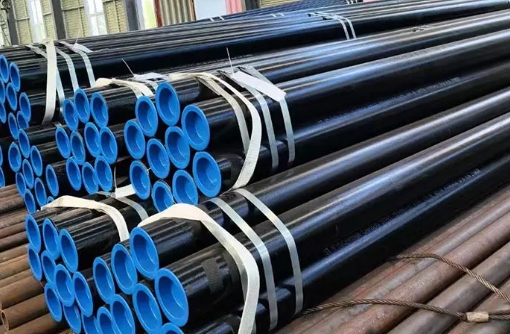
ASTM A106 Pipe Specification
Introduction of ASTM A106 pipe
ASTM A106 steel pipe is a seamless pipe. In high-temperature applications, the ASTM A106 standard is essential for guaranteeing the quality and dependability of seamless carbon steel pipes. Its comprehensive specifications are trusted across a wide range of industries, including oil and gas, petrochemical, and power generation. The standard is highly regarded for its stringent guidelines on material composition, manufacturing techniques, and testing protocols, all of which help ensure that the pipes perform reliably under extreme heat and pressure conditions.
Scope of ASTM A106 pipe
ASTM A106 covers seamless carbon steel pipes with nominal pipe sizes (NPS) ranging from 1/8 to 48 (DN 6 to DN 1200), inclusive. These pipes are designed for high - temperature service, and their nominal (average) wall thickness should comply with the specifications set by ASME B36.10M. Although pipes with other dimensions can be furnished, they must meet all the other requirements of this standard.
The size and wall thickness of ASTM A106 Pipe
The size and wall thickness of ASTM A106 seamless carbon steel pipes are specified in nominal pipe sizes (NPS) and schedule numbers (SCH), which define the outer diameter (OD) and wall thickness.
Standard Size Range (ASTM A106):
Nominal Pipe Size (NPS):
From NPS 1/8 inch to NPS 48 inches
Outside Diameter (OD):
Approximately 10.3 mm (0.405 inches) to 1219 mm (48 inches)
Wall thickness is designated by schedule numbers, such as:
SCH 10, 20, 40, 60, 80, 120, 160, and XXS (extra extra strong)
The actual wall thickness increases with the schedule number for a given pipe size.
Example (NPS 2" Pipe):
|
Schedule |
Wall Thickness (mm/in) |
|
SCH 40 |
3.91 mm (0.154 in) |
|
SCH 80 |
5.54 mm (0.218 in) |
|
SCH 160 |
9.53 mm (0.375 in) |
Note: ASTM A106 pipes are usually supplied in standard (STD), extra strong (XS), or double extra strong (XXS) wall thicknesses unless otherwise specified.

Manufacturing process of ASTM A106 pipe
1. Steelmaking
ASTM A106 pipes must be made from killed steel, produced by one or more methods such as open-hearth, basic oxygen furnace, or electric arc furnace. Optional secondary processes like electroslag remelting (ESR) or vacuum arc remelting (VAR) may also be used. The steel can be cast into ingots or made by continuous casting. If different grades are cast in sequence, the transition zone must be clearly identified and removed.
2. Forming
For sizes NPS 1 1/2 (DN40) and below, pipes can be made by hot forging or cold drawing. For NPS 2 (DN50) and above, pipes are usually hot-finished, unless otherwise specified by agreement, in which case cold-drawn pipes may be supplied.
3. Heat Treatment
Hot-finished pipes usually require no heat treatment. Cold-drawn pipes, however, must be heat-treated at 1200°F (650°C) or above after the final draw to relieve stress and enhance properties.
Chemical Composition
The standard specifies the maximum and minimum limits for several key elements in the steel used for ASTM A106 pipes. For example, the carbon content varies depending on the grade:
Grade A: maximum 0.25%
Grade B: maximum 0.30%
Grade C: maximum 0.35%
Manganese content also has specific ranges, and there are limits on impurities such as phosphorus and sulfur, both of which should not exceed 0.035% in all grades. Silicon has a minimum content requirement of 0.10% in each grade. Other elements like chromium, copper, nickel, vanadium, etc., also have their respective maximum limits to ensure the overall quality and performance of the steel.
Applications of ASTM A106 Pipe
ASTM A106 pipes are widely used in high-temperature environments, including:
1. Oil & Gas Industry: Used in pipelines for transporting hot oil and gas in refineries, petrochemical plants, and gas processing facilities—both onshore and offshore.
2. Power Generation: Applied in boilers, superheaters, and reheaters to carry high-temperature steam, ensuring reliable performance in power plants.
3. Chemical Industry: Suitable for moving hot chemicals and process fluids, thanks to their heat and corrosion resistance.
Read more: ASTM A106 Carbon Steel Pipe Introduction
- 【Prev】 : Quality Inspection Method for Elbow Fittings
- 【Next】 : Casing Pipe Size


